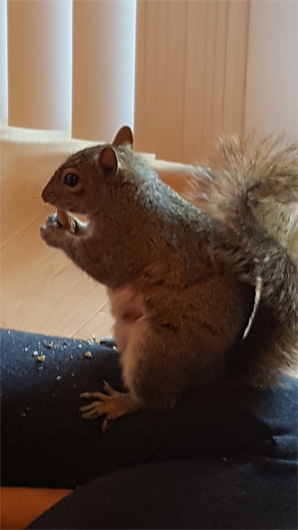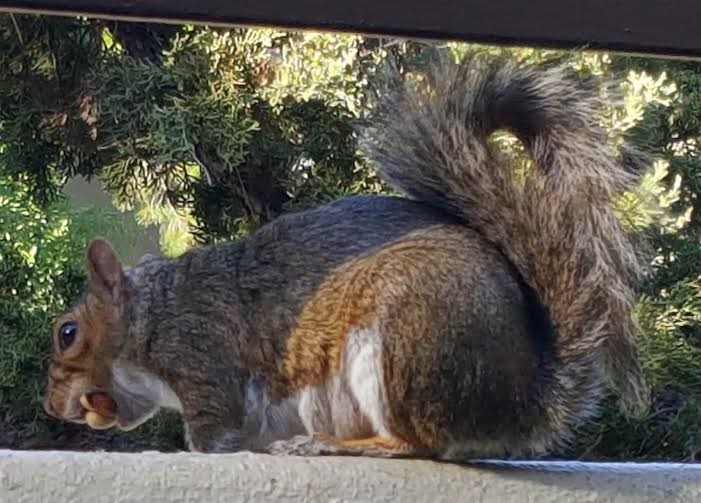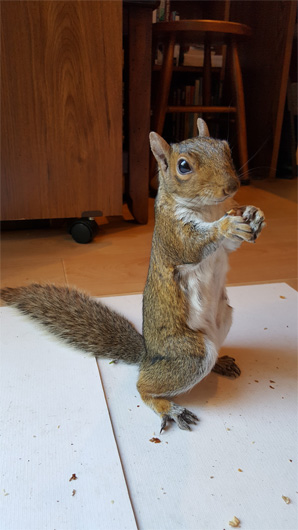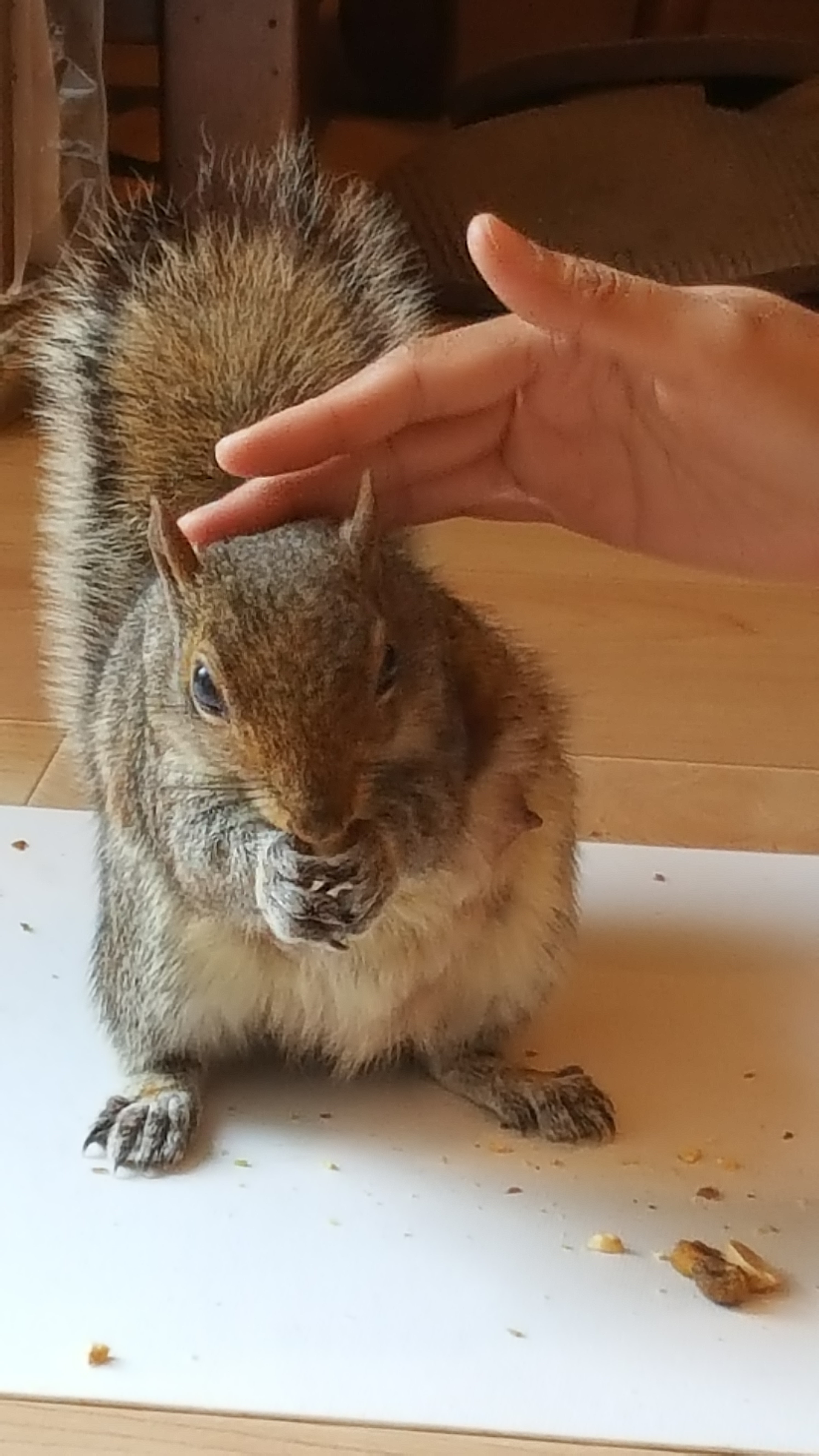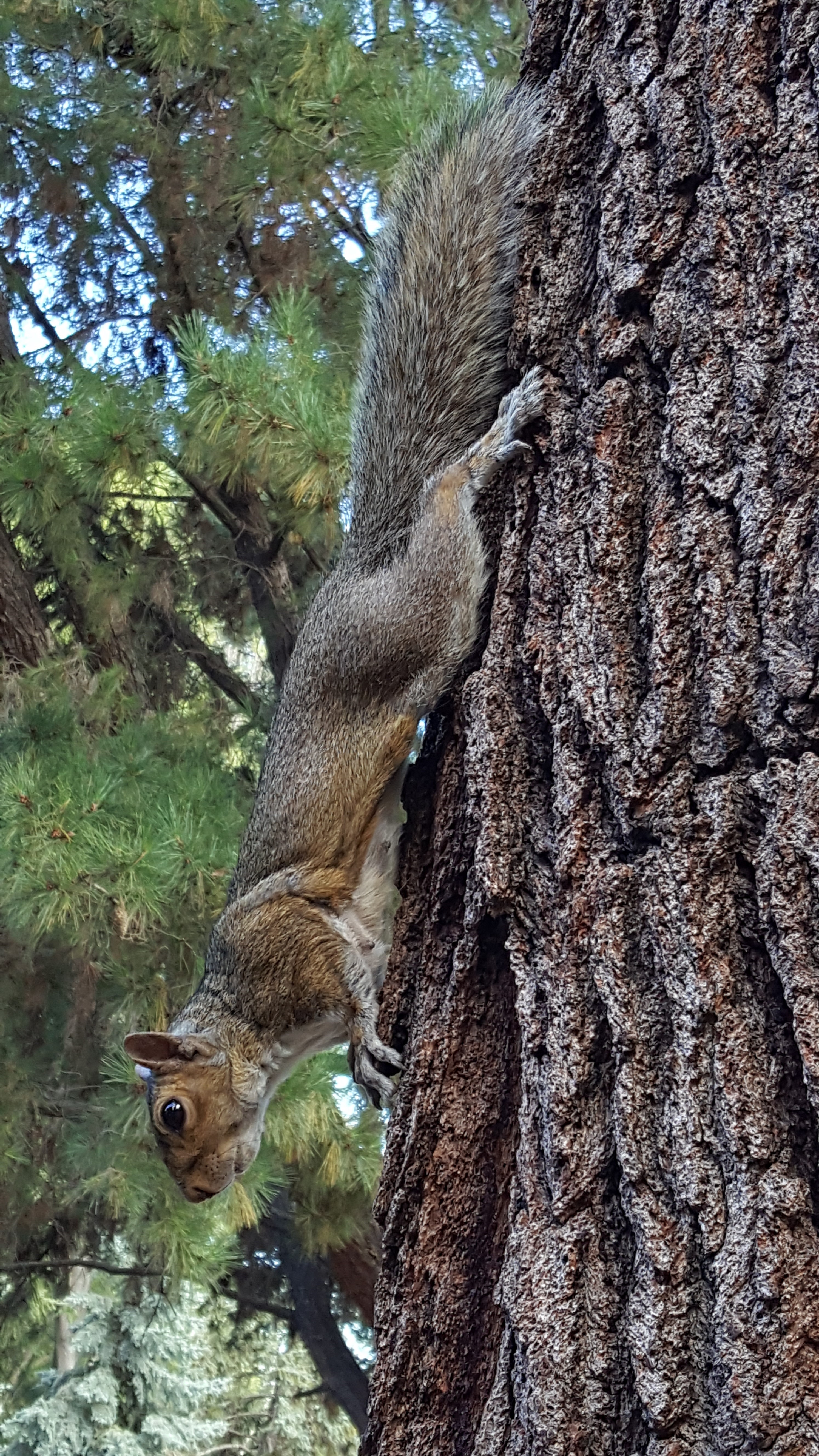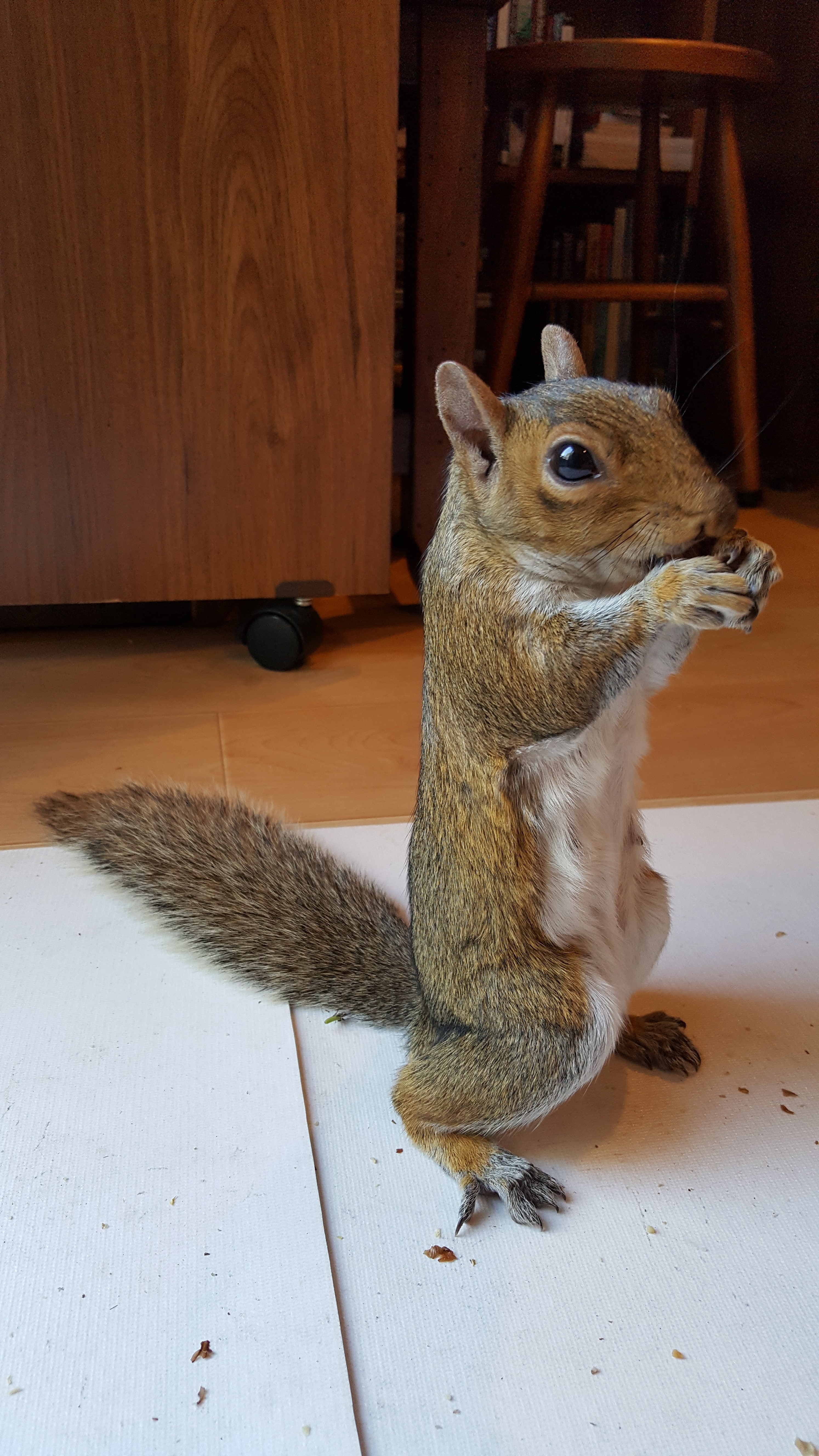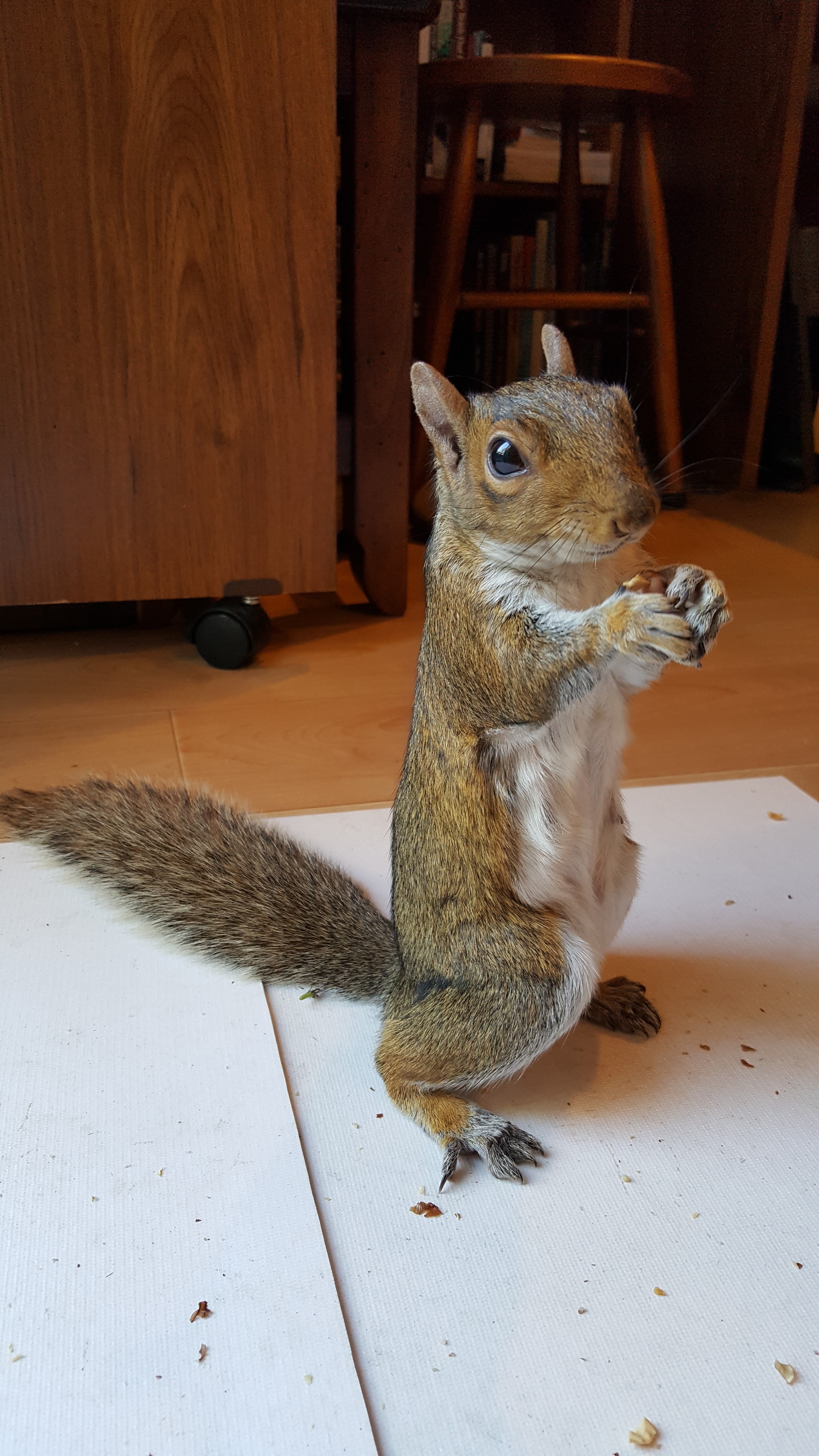Racqui’s Online Photo Album
(MOST) PHOTOS BY ANNY BERMAN
HAVE YOU EVER WONDERED why Kindle ebooks rarely include photos (apart from the covers)? The reason is that Kindle charges the author or publisher a “delivery fee” for each image in every book sold. Because the cost—in the aggregate—can be prohibitive, photos are usually avoided, even when the subject of the book is such that readers would like to see images. As a workaround to this challenge, we are putting up some photos here on RACQUI.com for readers who would like to see them. If there is significant demand, we may enhance the photo presentation and add videos.
In the meantime, for those of you who are interested, let’s show you some photos that help to tell the story of our beloved “arboreal rodent,” Racqui (pronounced like Rocky), the “Flying Squirrel.” For a "framed" view of any photo, simply click anywhere on the image.
The photo above is one of my favorites, as it shows Racqui—squirrel from the wild—looking so relaxed and comfortable in our home that she clearly considers it her home, as well. It had taken several months for our relationship to progress to the point that such a scene was possible. When we host Racqui in our home, we lift up the carpet and set out non-skid grip mats, to give her a more solid footing—and to help make clean-up easier! You might say she gets the “white carpet” treatment. (The opening to the balcony door can be seen in the upper left-hand corner.)
The photos below show the balcony deck—where it all started—as Racqui first got to know us, similar to the way that the little boy “tamed” the fox in the well-known poetic tale, The Little Prince.
From Life Lesson #2:
“Like the fox in The Little Prince, every day Racqui allowed the distance between us to be diminished. First, she allowed me to sit on a stool on the actual deck at the opposite end of the balcony. Each day, I would toss the peanut a bit closer to where I was sitting. Each day, Racqui would slowly crawl the distance from the corner where she entered to the point at which the peanut hit the deck—with a hollow clatter, like the sound of dice hitting a game board.”
In the photo below, you can see Racqui taking a peanut from Anny’s hand, from the safety of her perch in the adjoining pine tree. If you look carefully, you can see Racqui resting the fingers of her small forepaws onto Anny’s finger, as she takes the peanut. Squirrels have an amazing ability to balance themselves on small branches and their little fingers show a remarkable level of dexterity.
Food certainly plays a major role in any relationship between humans and animals. But we were surprised—initially, at least—when Racqui would come to simply “hang out” with us, either in our home, on the balcony railing or, as in the photos below, on the pine tree adjacent to our balcony.
The photo below shows what we call her “hotdog” pose. She will rest on a tree branch, like this, for extended periods of time, just gazing into our apartment at us. If squirrel watching is fun for humans, people watching may similarly be entertaining for squirrels! (Notice how her left rear foot is bracing her in position. Squirrels’ feet are said to be able to pivot up to 180 degrees.)
The book talks a bit about how squirrels build their nests, which for squirrels are known as “drays.” Here you can see one nearby dray, built in the shape of a heart! For squirrels, too, it seems, “Home is where the heart is.”
Speaking of drays and the litters they hold, here is an image Anny captured, showing all four of Racqui’s “kits” (babies) lined up along the tree trunk, below their nest, before they left the safety of the home that their mother built for them. Can you see the family resemblance?
Here you can see Racqui being pet by Anny during the time that Racqui was nursing her kits. The kits have since left the nest and Racqui has trimmed down considerably (her nipples are no longer so readily visible). When Racqui is being pet, she closes her eyes and arches her back in synch with the movement of the hand petting her. That tells us that she seems to be enjoying the massage.
The photographs below show Racqui seated on Anny’s knee, both of them obviously enjoying their time together. To Anny’s right, you can see the bag of nuts from which Racqui is being fed: peanuts (which purists will tell you are not really nuts but “legumes”), cashews, walnuts, almonds and pistachios. Nuts are roasted, to kill any possible bacteria, but never salted (as salt would not be good for the squirrel’s health). Notice how Anny’s legs are fully covered. Notice also Racqui’s clawed foot on Anny’s leg in the close-up photo on the right. You don’t want those clawed toes resting on or digging into your bare skin, we assure you!
Here, below, are a couple more photos of Racqui hanging out with us, on our balcony. This is her balcony ledge “pancake” pose.
She’s surprisingly cooperative when we take photos. When we call her name, to look straight at the camera, she almost always obliges, turning her head accordingly. That’s probably better than most children.
The scent she leaves on the ledge attracts her kits, who follow their mother by smell, all the way to our balcony. We’re now starting to get to know the kits as well.
If you look carefully at Racqui’s mouth in the photo below, you can see one peanut, one half peanut and one almond. In her “to go” mode, she stuffs as many nuts as she can at the same time into her mouth, to bury them all at different locations underground, maintaining a network of hundreds of subterranean stashes. Her “carry out” record for number of nuts held in her mouth at the same time is five! She holds them in her mouth as she leaps from balcony to roof to tree. Quite a feat!
In the photos below, you can clearly see how Racqui has trimmed down after her pregnancy and nursing period. (Her nipples are no longer readily visible.)
While she was nursing her kits, she was eating so voraciously that at times we became concerned that we might be feeding her too much. But Racqui always seems to know her limits. She only eats as much as she needs. The rest she will “take out,” to bury underground, in her network of subterranean stashes.
This is her seated eating position. Compare this with her standing eating position, which you will see a bit later in the sequence of photos, below.
We are always impressed by how clean Racqui manages to keep herself, living outdoors in the wild. Notice how immaculate her soft white underside is, in the photos immediately above and below.
Both indoors and out, Racqui is highly photogenic, as you can see.
Please brace yourself now for what you will see next, as it’s not a pretty sight! This is Dum Dum, who is also mentioned in the book. He is as homely as Racqui is beautiful. And he’s not very bright, either, poor fellow. Thus, his name, Dum Dum.
We don’t discriminate on the basis of appearance or even intelligence. We treated Dum Dum with love and kindness, welcoming him into our home, the same way we did with other squirrels.
Then he did something a good guest does not do (and none of the other squirrels has ever done): He urinated on our floor!
After that incident, he became rodenta non grata at our residence. We still feed him when we meet him outside but no longer allow him inside our home.
Back now to Racqui, who absolutely loves to play “catch,” at least as much as any dog we have ever known. “Tree catch” is one variety, which we play when she is outside, positioned on a tree (as described in the book). More recently, she has discovered the joys of “indoor catch”: Standing up on her hind legs, she catches dropped nuts, either with her forepaws or directly with her mouth. In the photo immediately below, you can see her readying herself for the drop.
We don’t yet have a clear photo of what happens next, as Racqui reaches her forepaws upward, “sky boxing” in the air, with each digit on her paws fully opened, in anticipation of the nut to fall.
We do have clear photos (below) of Racqui consuming her prize. What surprised us is that she will eat these nuts not in her standard seated position but in a standing position, fully erect (see below).
We hope that you have enjoyed viewing these photos as much as we enjoyed taking them.
If you have not yet obtained a copy of 25 Life Lessons from Racqui the Flying Squirrel, you are invited to point your browser to 25LifeLessons.com, which will forward you to the appropriate page on Amazon-Kindle, where a free “Look Inside” preview is available.
We have learned much of great value from Racqui and we continue to learn from her on a daily basis. It can be difficult to understand and appreciate that with which we are unfamiliar. But when we make the effort to do so, the rewards can be immense. If you agree that this is a message worth spreading, we invite you to share the link above with anyone you think might be interested.
Don’t miss the two last photos below!
Copyright © 2016– · All Rights Reserved · www.racqui.com











